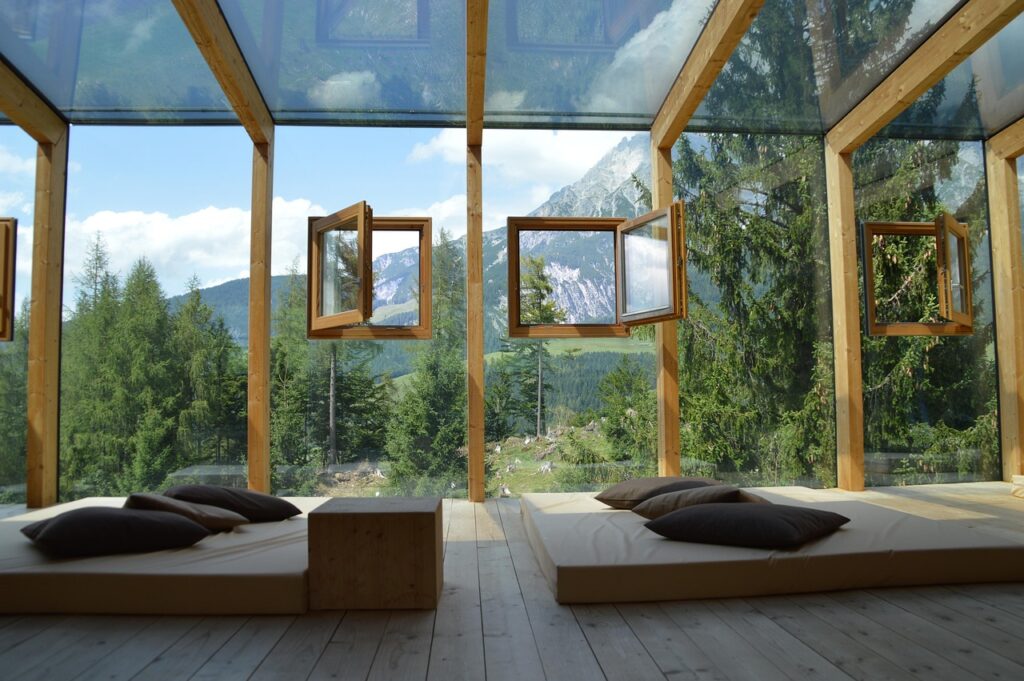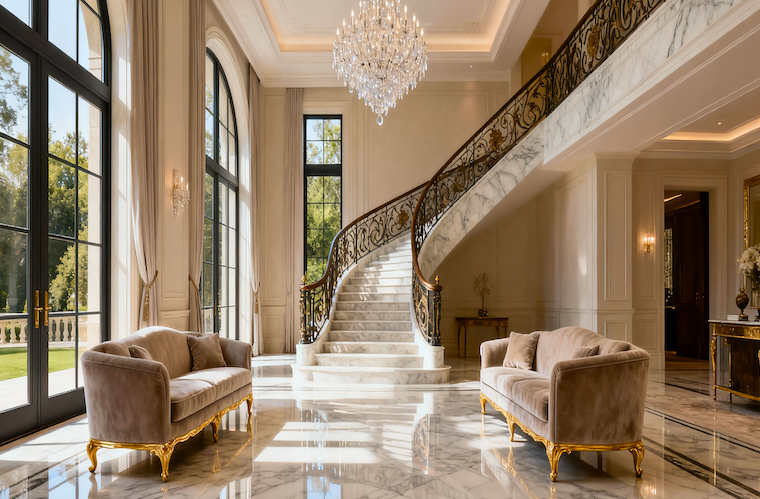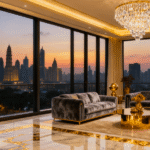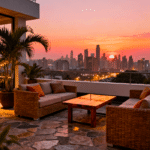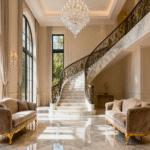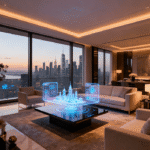Now Reading: The Power of Location: Investing in India’s Most Coveted Luxury Addresses
- 01
The Power of Location: Investing in India’s Most Coveted Luxury Addresses
The Power of Location: Investing in India’s Most Coveted Luxury Addresses
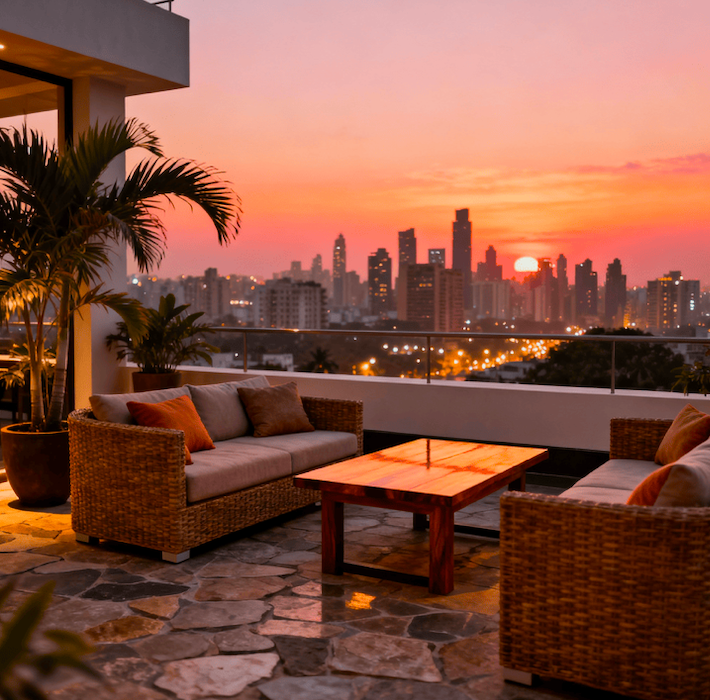
In today’s India, luxury addresses and luxury real estate is more than bricks and mortar—it’s a statement of legacy, lifestyle, and limitless possibility. From the colonial grandeur of Lutyens’ Delhi to Mumbai’s soaring skyline and Bangalore’s tech-infused enclaves, the nation’s premier addresses are magnetizing global investors and NRIs alike. As wealth creation accelerates and branded residences become status symbols, the race is on to secure an apartment with panoramic sea views or a heritage bungalow nestled among century-old trees. This guide reveals why location is everything, how the world’s elite are staking their claim, and what you need to know to join their ranks.
A New Era of Luxury Living
Gone are the days when luxury meant sheer size. Today’s discerning buyer seeks irreplaceable views, unmatched concierge services, and seamless integration with city life. Imagine sipping evening cocktails on a private terrace overlooking Marine Drive, or hosting intimate dinners in a four-bedroom residence managed by a five-star hotel brand. These experiences define the next frontier of investment—where emotional resonance meets enduring value.
Why India’s Luxury Addresses Matter
Global Comparisons, Local Advantages: Purchasing on Dubai’s Palm Jumeirah or New York’s Upper East Side carries prestige, but at a fraction of the cost, Mumbai’s elite towers deliver similar thrills—and often stronger upside—thanks to a buoyant local market and infrastructure investments that continue to reshape the skyline.
Scarcity Meets Sophistication: In South Mumbai’s Cumballa Hill, development is capped. Every apartment here feels like a private club—exclusive, ultra-secure, and drenched in history.
Branded Residences, Branded Returns: When Four Seasons or Ritz-Carlton lends its name, buyers gain more than luxury finishes; they tap into a world of bespoke services—from personal trainers to in-home gourmet experiences.
Four Transformative Forces Driving India’s Luxury Boom
1. Explosive Wealth Creation at Scale
India’s UHNI population grew 6.1% in 2023 alone, with Knight Frank projecting a 50% surge by 2028. Unlike the static wealthy populations of mature markets, India is experiencing explosive wealth generation driven by technology entrepreneurship, equity market gains (Nifty 50 delivering 12-14% average annual returns), and maturing first-generation business empires.
Goldman Sachs forecasts India’s affluent consumer base will expand from 60 million in 2023 to 100 million by 2027, creating sustained structural demand for luxury living spaces. This demographic dividend, unique to India among major economies, ensures decade-long growth momentum.
2. Post-Pandemic Lifestyle Recalibration
COVID-19 fundamentally altered luxury homebuyer priorities. According to CBRE India, luxury home sales (priced above ₹4 crore) surged 37.8% year-on-year from January to September 2024, with Delhi NCR and Mumbai accounting for nearly 90% of transactions.
Today’s UHNIs seek properties offering:
- Expansive layouts with dedicated home offices and wellness zones
- Integrated smart home technology and IoT-enabled security systems
- Exclusive amenities: private pools, concierge services, curated resident communities
- Proximity to premium healthcare, international schools, and business districts
This evolution propelled demand for branded residences—developed in partnership with Four Seasons, Ritz-Carlton, Mandarin Oriental, and emerging brands like Bentley and Armani Casa. These properties command 30-40% premiums but deliver 15-20% faster appreciation rates.
3. NRI Currency Advantage and Regulatory Clarity
The favorable USD-INR exchange rate (₹83-85 per dollar in 2024-2025) creates compelling arbitrage for NRIs. Combined with relaxed FEMA regulations, RERA-driven transparency, and Double Taxation Avoidance Agreements (DTAA) benefits, NRIs are channeling unprecedented capital into India’s luxury segment.
ANAROCK Research projects NRI investments will reach $14.9 billion by 2025, with luxury residential properties comprising a significant portion. The rupee’s historical volatility presents strategic entry points: timing purchases during INR weakness (₹83-85) provides 8-12% immediate value advantage before property appreciation even begins.
4. Infrastructure Metamorphosis Unlocking Prime Addresses
Mega-infrastructure projects are redefining urban connectivity:
Mumbai: Coastal Road, Metro Line 3 (Aqua Line), Navi Mumbai International Airport
Delhi NCR: Delhi-Meerut Expressway, Dwarka Expressway, Airport Expansion
Bangalore: Peripheral Ring Road, Metro Phase 2, Satellite Town Ring Road
Hyderabad: Regional Ring Road, Metro expansion into Financial District
These transformative projects create new luxury micro-markets while amplifying scarcity premiums of established addresses.
India’s Most Coveted Luxury Addresses: City-by-City Analysis
Mumbai: The Billionaire’s Row of Asia
Market Snapshot:
- Global Ranking: 8th in Knight Frank’s Prime Global Cities Index
- Price Range: ₹50-100 crore (South Mumbai), ₹40-80 crore (Worli/Bandra)
- 2024 Performance: 18% YoY price appreciation
- Ultra-Luxury Sales (₹40cr+): ₹2,443 crore (Jan-Aug 2024)
Prime Micro-Markets:
Altamount Road (Cumballa Hill)
India’s most prestigious address commands ₹54,027-₹1,26,050 per sq ft, housing business titans like Mukesh Ambani (Antilia) and Radhakishan Damani. Notable projects include Lodha Altamount and Kalpataru Privé. Investment Thesis: Irreplaceable scarcity—limited development opportunities ensure perpetual demand from India’s ultra-wealthy seeking maximum social cachet.
Malabar Hill
Averaging ₹28,571-₹1,00,000 per sq ft, this heritage enclave features Raj Bhavan, Hanging Gardens, and Banganga Tank. Projects like Suparshva Terraces and Kalpataru Azuro offer sea-facing properties commanding ₹2.5-5.5 lakh monthly rents—ideal for legacy wealth preservation.
Worli
At ₹25,408-₹1,00,000 per sq ft, Worli benefits from Bandra-Worli Sea Link connectivity. Developments like Lodha Adrina, Birla Niyaara, and Raheja Imperia attract working UHNIs seeking prestige combined with convenience. Rental potential: ₹2.5-5 lakh per month for 3BHK ultra-luxury units.
Delhi NCR: The New Luxury Capital
Market Snapshot:
- 2024 Performance: 20% YoY price growth (highest in India)
- Market Dominance: 90% of India’s ultra-luxury transactions (with Mumbai)
- Gurugram Leadership: Epicenter of new luxury developments
Prime Micro-Markets:
Lutyens’ Delhi
Heritage bungalows command ₹1.65-11 crore, with exceptional properties reaching ₹110+ crore. Colonial-era architecture and diplomatic zone status create absolute scarcity—no new supply possible. This pure legacy asset appreciates 8-12% annually for decades.
Golf Course Road (Gurugram)
Ultra-luxury segment averages ₹35-50 crore. DLF The Camellias recorded India’s highest-ever apartment sale at ₹190 crore in 2024. Branded residences like ITC Grand Bharat and Westin Residences capitalize on corporate executive demand, delivering 4-6% rental yields with 15-20% appreciation potential.
New Gurugram (Sohna Road & Golf Course Extension)
At ₹20-35 crore, this emerging luxury zone benefits from Dwarka Expressway and upcoming metro connectivity. Projects like Godrej Aristocrat and Sobha City offer 30-40% discounts to Golf Course Road with convergence potential over 7-10 years.
Bangalore: The Silicon Valley Luxury Hub
Market Snapshot:
- Tech Wealth Concentration: Startup unicorn founders, senior tech executives
- Price Range: ₹15-40 crore (prime locations)
- Rental Yields: 3.5-4.5% (highest among metro cities)
Prime Micro-Markets:
Whitefield
Proximity to ITPB and major tech campuses drives corporate rental demand, ensuring 95%+ occupancy rates with 6-8% annual rental escalations. Projects like Prestige Lakeside Habitat and Brigade Cosmopolis dominate this tech corridor.
Ritz-Carlton & Four Seasons Residences
Bangalore’s first major branded residence wave commands 30-40% premiums above comparable non-branded properties. Service infrastructure includes 24/7 concierge, housekeeping, and private dining. Early adopters benefit from brand establishment phase with 12-18% annual appreciation.
Koramangala
This fully developed urban village appeals to young HNIs with boutique luxury and startup ecosystem proximity. At ₹18-30 crore, limited new supply ensures sustained appreciation.
Global Competitive Analysis: Where India Stands

Super-Prime Transaction Leadership
| City | $10M+ Sales 2024 | Total Value (USD) | YoY Growth |
|---|---|---|---|
| Dubai | 435 | $2.6B | +9% |
| New York | 300 | $2.9B | +4% |
| Mumbai* | 85 | $1.2B | +18% |
| London | 45 | $0.9B | -1% |
| Singapore | 53 | $1.0B | +6% |
*Mumbai equivalent based on ₹40 crore+ sales
Investment Return Comparison
Price Appreciation (2024):
- Mumbai: +18% YoY (Leading global metros)
- Dubai: +9% YoY
- Singapore: +6% YoY
- New York: +4% YoY
- London: -1% YoY
Rental Yields:
Entry Price Advantage:
Mumbai’s ultra-luxury properties at $1,400/sq ft represent a 55% discount to New York ($3,100), 50% to Singapore ($2,800), and 37% to London ($2,200), while delivering superior appreciation rates. This pricing arbitrage, combined with India’s 6-7% GDP growth trajectory, creates compelling value for global capital.
Case Study 1: Mumbai’s Branded Luxury Addresses Revolution
Project: Lodha World Towers x Armani/Casa
Location: Worli, Mumbai
Investment Profile: ₹45 crore (3BHK, 2,800 sq ft)
Performance Analysis (2021-2025):
- Launch Price (2021): ₹38 crore
- Current Valuation (2025): ₹58 crore
- Appreciation: 52.6% (4-year holding)
- Annual Return: 13.15% (vs 10% non-branded comparables)
- Rental Yield: 3.2% (₹1.85 lakh/month)
Success Factors:
- Armani/Casa brand equity attracted expat executives and corporate relocations
- Building management by hospitality professionals ensured zero maintenance issues
- Resale liquidity: 18% faster transaction cycle vs non-branded properties in same micro-market
Investor Profile: 45-year-old tech entrepreneur, primary residence, valued lifestyle services and brand prestige over absolute square footage maximization.
Case Study 2: NRI Strategic Entry in Delhi NCR
Project: DLF The Camellias, Golf Course Road, Gurugram
Investment Profile: ₹72 crore (4BHK, 8,500 sq ft)
Investment Strategy:
- Purchase Timing: October 2023 (USD-INR at ₹83.50)
- Funding: 60% USD remittance, 40% India-held NRO savings
- Ownership Structure: Family trust (succession planning + tax optimization)
Financial Outcomes (2023-2025):
- Purchase Price: ₹72 crore
- Current Valuation: ₹94 crore
- Appreciation: 30.5% (18-month holding)
- Currency Gain: 8.2% additional (INR strengthened to ₹77 by Q3 2025)
- Total USD Return: 38.7% (annualized: 25.8%)
Tax Efficiency:
- DTAA benefits reduced effective tax rate on notional rental value from 30% to 18%
- Trust structure enables seamless succession to next generation without inheritance tax complications
Investor Profile: 52-year-old NRI software executive (Silicon Valley), seeking retirement home with investment value, capitalized on currency timing and location prestige.
Scenario: $2 million investment allocation (2020-2025)
Case Study 3: Dubai vs Mumbai Comparative Investment
Investment A: Dubai Palm Jumeirah
- Property: 3BHK villa, 4,000 sq ft
- Purchase Price (2020): $1.8M (actual property cost) + $200K furnishing
- 2025 Valuation: $2.6M
- Appreciation: 44.4% (5-year)
- Rental Yield: 6.5% average
- Total Return: 77% cumulative (price + rental income)
Investment B: Mumbai Worli
- Property: 3BHK apartment, 2,500 sq ft
- Purchase Price (2020): ₹14.5 crore ($1.95M at ₹74/USD) + ₹50L furnishing
- 2025 Valuation: ₹25 crore ($3M at ₹83/USD)
- Appreciation (INR): 66.7% (5-year)
- Appreciation (USD): 53.8% (includes currency impact)
- Rental Yield: 3% average
- Total Return: 71% cumulative (USD-denominated)
Key Insights:
- Dubai delivered higher absolute returns (+6% vs Mumbai)
- Mumbai provided superior capital appreciation despite currency headwind
- Dubai’s rental yield advantage (6.5% vs 3%) narrowed by Mumbai’s faster price growth
- Tax considerations: Dubai offers zero property tax vs India’s 30% on rental income (mitigated by DTAA for NRIs)
Conclusion: For income-focused investors, Dubai excels; for capital appreciation and lifestyle prestige, Mumbai leads.
Investment Drivers: Why UHNIs Are Allocating Now
According to India Sotheby’s International Realty’s 2025 survey, over 60% of HNIs and UHNIs intend to invest in real estate within the next two years. Their motivations reveal sophisticated investment calculus:
1. Capital Appreciation (55% of Respondents)
Ultra-premium properties in Mumbai, Delhi NCR, and Bangalore appreciate at 8-12% annually—outpacing equity volatility while providing tangible asset backing.
2. Portfolio Diversification (15%)
Post-COVID volatility drove UHNIs to reduce equity concentration from 50-60% to 35-45%. Real estate’s low correlation with stock markets (0.2-0.3) provides essential risk mitigation.
3. Rental Income Stability (18%)
Luxury properties deliver predictable 2.5-4% gross yields with rental escalations of 6-8% annually. Corporate rentals offer 3-5 year lease stability.
4. Tax Optimization (7%)
- Capital Gains Exemption: Up to ₹10 crore from property sales can be reinvested tax-free (Sections 54/54F)
- DTAA Benefits for NRIs: Avoid double taxation
- Wealth Tax Abolition: No tax on property holdings since 2015
5. Lifestyle & Social Capital (8%)
Addresses like Altamount Road and Lutyens’ Delhi provide social signaling transcending monetary value.
6. NRI Currency Arbitrage (12% of NRI Respondents)
Strong USD-INR (₹83-85) provides NRIs 8-12% immediate purchasing power advantage.
The Branded Residence Revolution
India Ranks 6th Globally
Knight Frank’s Residence Report 2025 reveals India’s positioning as the 6th largest market globally for live branded residence projects, contributing 4% of global supply. With nearly 86,000 individuals worth over $10 million, India represents one of the fastest-growing frontiers for branded living.
Why Premiums Are Justified
Branded residences deliver:
- 30-40% price premium at launch
- 15-20% faster appreciation vs non-branded comparables
- 25% higher rental yields due to corporate/expat demand
- Superior resale liquidity: 15-20% faster transaction cycles
Leading Projects
Mumbai: Lodha World Towers x Armani/Casa, Four Seasons Residences, Trump Tower
Delhi NCR: Leela Sky Villas, ITC Grand Bharat, Westin Residences
Bangalore: Prestige x Four Seasons, Ritz-Carlton Whitefield, Embassy x Hilton
Pune: Panchshil x Trump Towers, YOO Pune
Investment Risks & Mitigation Strategies
8 Critical Risk Factors
1. Market Volatility (Medium Risk)
Mitigation: Diversify across 2-3 prime micro-markets; maintain 30-40% portfolio allocation cap
2. Regulatory Changes (Medium-High Risk)
Mitigation: Only invest in RERA-registered projects; work with legal advisors
3. Liquidity Constraints (Medium Risk)
Reality: Luxury properties take 8-18 months to sell
Mitigation: Maintain 12-18 month expense buffer; consider rental income
4. Oversupply Risk (Low-Medium Risk)
Watch Areas: Noida Extension, peripheral Bangalore
Safe Havens: South Mumbai, Lutyens’ Delhi (supply-constrained)
5. Currency Risk for NRIs (Medium Risk)
Mitigation: Time entry during INR weakness (₹83-85); hedge via rental income
6. Tax Policy Evolution (Medium Risk)
Recent Changes: ₹10 crore capital gains exemption cap (2023 Budget)
Mitigation: Structure ownership via family trusts/SPVs for UHNI
7. Economic Downturn Impact (Medium Risk)
Historical Evidence: 2008-09 saw 15-20% corrections, but prime markets recovered within 18-24 months
Mitigation: Focus on recession-resistant locations; branded residences show greater resilience
8. Climate & Environmental (Low-Medium Risk)
Mitigation: Prioritize green-certified properties (LEED, GRIHA); invest in climate-resilient infrastructure areas
Tips for UHNI Investors
Tip #1: Location Supremacy Over Size
The Principle: A 2,000 sq ft apartment in South Mumbai’s Altamount Road will outperform a 10,000 sq ft villa in tier-2 suburb by 3-5x over 10 years.
Rationale: Irreplaceable addresses with geographical scarcity experience perpetual demand compression. Mumbai’s land scarcity, Lutyens’ construction ban, and Golf Course Road’s limited developable land create natural supply constraints.
Action: Prioritize addresses with <5 years remaining developable land supply; accept smaller square footage for location premium.
Tip #2: Branded Residence Premium Strategy
The Principle: Four Seasons/Ritz-Carlton properties command 30-40% premiums but deliver 15-20% faster appreciation and 25% higher rental yields.
Action: Target developments with proven hospitality brand management (>10 years India track record); verify service contracts extend beyond sales period (10+ years minimum).
Tip #3: NRI Currency Timing Advantage
The Principle: Entry at ₹84 vs ₹76 provides 10.5% arbitrage. Combined with 12-15% annual property appreciation, effective USD returns reach 22-27%.
Action: Monitor USD-INR technicals; enter during 83-85 range; layer purchases (40% immediate, 60% over 12-18 months).
Tip #4: Micro-Market Intelligence
The Principle: Within Mumbai, Worli outperforms Bandra; within Delhi NCR, Golf Course Road beats Greater Noida—creating 20-40% valuation differentials.
Action: Invest 40+ hours researching upcoming metro/expressway projects (within 3 km radius), corporate office relocations, international school/hospital developments, historical price trends (10-year data).
Tip #5: Developer Pedigree Due Diligence
The Principle: Only invest with developers having 20+ year track record, <5% project delays, RERA compliance score >90%.
Action: Verify via independent legal/technical audits (NOT marketing collateral); check MahaRERA/State RERA compliance history, past project delivery timelines, financial stability.
Tip #6: Tax-Optimized Ownership Structure
The Principle: For UHNI investments >₹10 crore, use SPVs, family trusts, or holding companies to optimize capital gains tax and simplify succession planning.
Action: Consult CA + Estate Planning Attorney before purchase; structure is easier to set up BEFORE acquisition.
Pro Tip #7: Portfolio Rebalancing Discipline
The Principle: Maintain 60% real estate (40% luxury residential + 20% commercial/REITs), 30% equities, 10% liquid/alternative assets. Rebalance annually.
Action: Review portfolio quarterly; book profits when luxury appreciation exceeds 15% in <3 years (reinvest via 54/54F exemption).
Is the Market Overheating?
The Bear Case
Argument #1: Valuation Disconnect
Critics argue Mumbai’s ₹1+ lakh/sq ft properties represent speculative excess. Rent-to-price ratios of 2-2.5% suggest assets priced for perpetual appreciation.
Counter: Luxury real estate is a Veblen good—demand increases with price due to status signaling. Comparable global addresses (New York’s Central Park South, London’s Mayfair) trade at $5,000-10,000/sq ft. India’s leading addresses remain 60-70% cheaper.
Argument #2: Future Tax Policy Risks
The 2023 Budget’s ₹10 crore capital gains cap signals government intent to tax ultra-wealth more aggressively.
Counter: India’s economic growth depends on capital formation. Punitive taxation would drive UHNI capital offshore. The ₹10 crore cap targets extreme outliers while preserving mainstream luxury incentives.
Argument #3: Oversupply in Luxury Segment
Over 50% of new launches in 2024 were luxury (>₹4 crore).
Counter: Supply concentrates in mid-tier luxury (₹4-10 crore). Ultra-prime supply (₹40+ crore) remains severely constrained in Mumbai South, Lutyens’ Delhi, Golf Course Road.
Frequently Asked Questions
What is the minimum investment for luxury real estate in India’s prime markets?
Entry-level luxury in Mumbai’s Worli starts at ₹40 crore (3BHK, ~2,000 sq ft), while Delhi NCR’s Golf Course Road begins at ₹35 crore. Bangalore’s branded residences like Four Seasons offer entry from ₹25 crore. Ultra-prime properties (South Mumbai’s Altamount Road, Lutyens’ Delhi) command ₹50-100+ crore. NRIs benefit from USD-INR rates (₹83-85), reducing effective USD entry points by 8-12%.
How do rental yields for luxury properties in India compare globally?
India’s luxury rental yields average 2.5-4%, higher than London (2.4%) but lower than Dubai (7%). Mumbai’s Worli achieves 3-3.5%, while Bangalore’s Whitefield reaches 3.5-4.5%. Branded residences command 25% yield premiums. While lower than Dubai, India’s superior capital appreciation (10-18% annually vs Dubai’s 9%) delivers stronger total returns of 12.5-22% annually.
What are tax implications for NRI investors?
NRIs face: (1) Rental Income: Taxed at 30% but DTAA prevents double taxation; (2) Capital Gains: 20% LTCG after 24 months with indexation benefits, but ₹10 crore exemption when reinvested (Sections 54/54F); (3) Repatriation: Permitted up to $1 million annually via NRO/NRE accounts. Consult CA familiar with FEMA regulations.
Which Indian city offers best luxury real estate opportunity in 2025?
Delhi NCR leads on appreciation (20% YoY), driven by Gurugram’s Golf Course Road. Mumbai offers legacy prestige and liquidity (8th globally) with 18% YoY gains. Bangalore provides highest rental yields (3.5-4.5%). Optimal strategy: 50% Mumbai (prestige + liquidity), 30% Delhi NCR (appreciation), 20% Bangalore (yield).
Seizing the Generational Opportunity
The Next Decade: From Boom to Structural Transformation
India’s luxury real estate stands at an inflection point. A 50% UHNI population expansion by 2028, $101.92 billion market size (2.7x growth), and 6th-place global ranking in branded residences signal more than cyclical momentum—this is India’s irreversible march toward economic supremacy.
Three Megatrends Shaping 2025-2030
1. Branded Residence Proliferation
Expect 40-50 new branded projects by 2028. Beyond hospitality, automotive (Bentley, Aston Martin, Bugatti) and fashion brands (Armani, Versace, Fendi) will deepen India presence. Early adopters in 2025-26 capture establishment-phase premiums of 20-30%.
2. Tier-2 City Emergence
Lucknow, Indore, Coimbatore witness 15-20% annual luxury growth as infrastructure unlocks previously overlooked markets. These cities offer 40-50% discounts to metro pricing with convergence potential over 7-10 years.
3. Sustainability & ESG Integration
Post-2030, non-green-certified luxury properties face 15-20% valuation discounts as millennials and Gen-Z UHNIs (40% of India’s wealthy by 2030) prioritize ESG credentials.
Your Strategic Next Steps
For UHNIs/HNIs:
- Conduct portfolio audit (target 40-60% real estate allocation)
- Engage advisors: CA (tax), Real Estate Attorney (RERA/title), Wealth Manager
- Shortlist 2-3 prime micro-markets aligned with lifestyle/investment horizon
- Verify developer track record, RERA compliance, project timelines
- Structure ownership (individual vs SPV/trust) based on tax/succession goals
For NRIs:
- Monitor USD-INR; consider entry at ₹83-85 range
- Engage FEMA-familiar CA for NRO/NRE accounts, repatriation
- Leverage DTAA to minimize double taxation
- Establish Power of Attorney with trusted advisor
- Schedule 10-15 day India trip to physically inspect shortlisted properties
The Ultimate Luxury Addresses Investment Thesis
In an era of monetary uncertainty, geopolitical volatility, and equity turbulence, India’s most coveted addresses—Altamount Road, Lutyens’ Delhi, Golf Course Road, Worli—offer a rare combination: aspirational living, social capital, inflation hedging, and compelling financial returns.
The window is narrowing. As supply constraints intensify and UHNI population expands 50% by 2028, today’s entry prices will be remembered as the “early days” of India’s luxury real estate golden age.
The question is not whether to invest in India’s prime addresses, but how quickly you can secure your position in this generational wealth-building opportunity.



